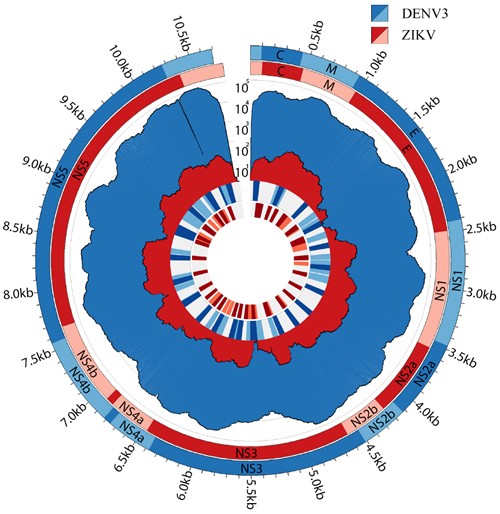
Photo credit: PLOS Neglected Tropical Diseases
NUS scientists in Singapore on 12 Sep 2019, have announced the development of a more efficient method to sequence the complete genomes of infectious diseases carried by mosquitoes directly from patient samples.
The Dengue, Zika and Chikungunya viruses are potentially life-threatening diseases. These viruses are transmitted to humans by the bite of an infected mosquito. The Zika virus can also be transmitted from an infected mother to her unborn foetus. Alarmingly, the distribution of these viruses and their mosquito vectors have increased dramatically in recent years, leading to an upward trend in the number of infections. Patients infected by these viruses exhibit similar symptoms, making it challenging to make a correct diagnosis.
In response to the threat posed by these viruses, a research team lead by Prof October SESSIONS from the Department of Pharmacy and the Saw Swee Hock School of Public Health, NUS has developed a more efficient method to sequence the complete viral genomes of the Dengue, Zika and Chikungunya viruses directly from patient samples (urine and blood). Complete viral genome information is important because it can provide information on the origin of the virus and its harmful effects. This information can then be used to rapidly characterise outbreaks and curb the spread of the virus within the community.
Obtaining the full genomes of viruses from patient samples is a laborious, often futile prospect that requires detailed knowledge about the virus. The main problem encountered with the direct sequencing of complete viral genomes from patient samples is that the sample contains too much human genetic material, compared to the amount of viral genomes, for this approach to work consistently. The researchers used a computational algorithm which they had developed to design “baits” that can specifically capture the viral genome, and in the process remove the non-viral part of the sample. This increases the amount of viral genomes in the sample, which results in improved sensitivity and efficiency of the genome sequencing.
Prof Sessions said, “Broad adoption of this methodology can potentially provide a more efficient way to obtain viral information from infected patients. It can be further developed into a portable, phone-sized genomic sequencer, making it accessible in the field.”
Photo: Plot showing the co-infection of the Dengue type three virus (DENV3) and the Zika virus (ZIKV) identified in one clinical subject by using the “baits” on blood samples from the patient. From the outermost circle, the plot shows the DENV3 and ZIKV viral genomes, the number of reads of a given nucleotide (amount of genomic material) and locations where the baits hybridise.




